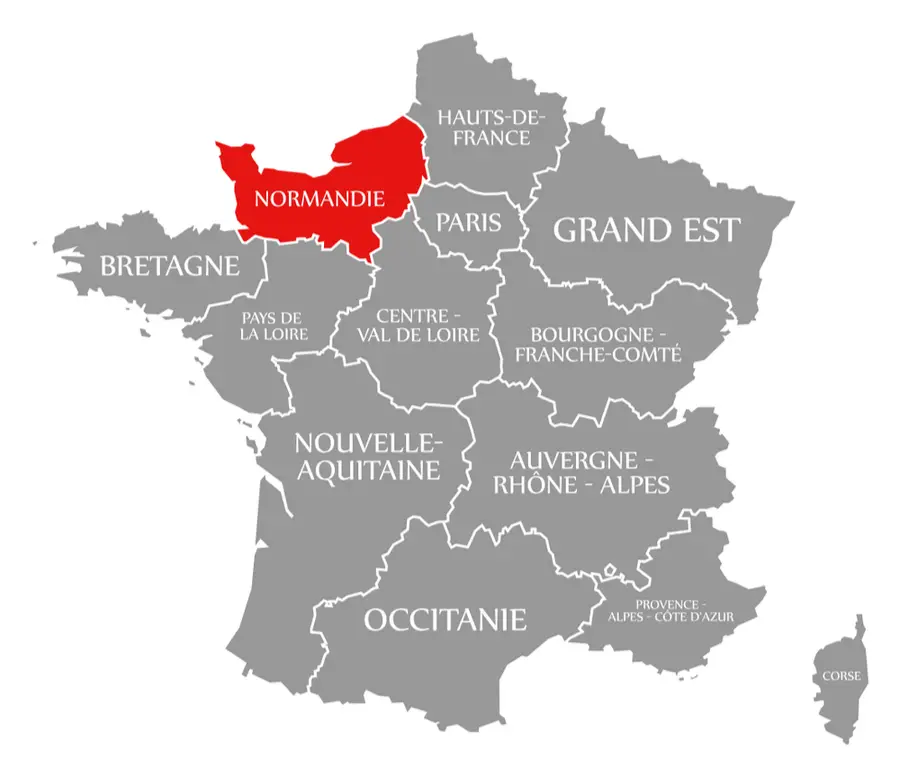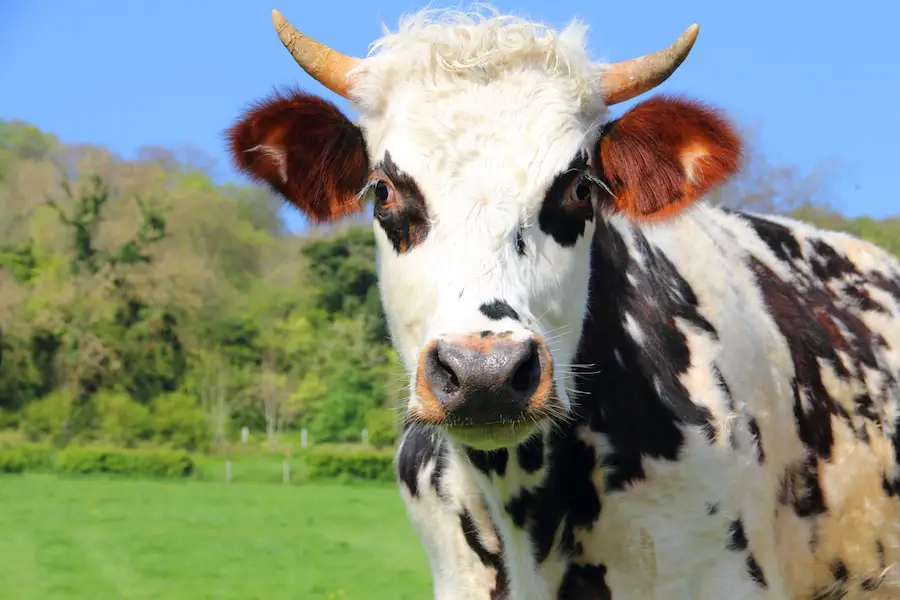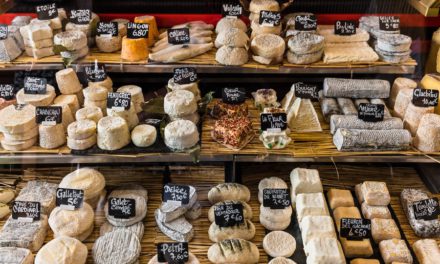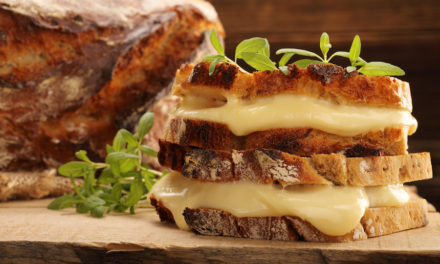What is Camembert cheese?
You’ve been at a dinner party with friends, and someone mentioned the name Camembert cheese, or you’ve seen it on the supermarket shelves and were intrigued to find out what Camembert cheese is and where it comes from. According to Le Institut national de l’origine et de qualité INAO.
Camembert cheese is a soft cheese with a white bloomy crust. It is cylindrical in shape, 3 centimeters thick and 10.5 to 11.5 centimeters in diameter. It weighs at least 250 grams and must have at least 115 grams of dry extracts and 45% fat in dry extracts.
It is worth mentioning that there is the traditional Camembert cheese called “Camembert de Normandie AOP” and the “Camembert fabriqué en Normandie”, the former follows the ancestral recipe through an artisanal methodology and the latter uses an automated industrial process.
Where does Camembert cheese come from?
Camembert cheese is a cheese originating from France. It was developed in a region in the north of the country called Normandie. Nowadays, many different Camembert cheeses are made around the world, but they have nothing to do with the original, which is French.
Thanks to the geography, France has a climate that has allowed the country to become a true cheese country. It is said that France has more than 1200 different varieties of which Camembert cheese is possibly the most famous cheese in the hexagon.

Who invented Camembert cheese?
Camembert cheese was developed by Marie Harel at the end of the 18th century, in 1790. Marie Harel was a dairy farmer who lived in the commune of Vimoutiers, in the department of Orne, Normandie.
Legend has it that she gave lodging to a refractory priest the abbot who was fleeing the terror of the French Revolution. In return for payment or simply as a thank you, he helped Marie Harel to perfect the cheese she was making. This was the beginning of the history of this delicious cheese. Today, Camembert cheese is mainly produced in the Normandie region in the north of France, specifically in the departments of Calvados, Manche and Orne.
It became famous for two reasons, first Napoleon the Third, passing through the region, tasted it and demanded that from that day on there should always be a Camembert cheese on his table. Later, at the end of the First World War, all the soldiers returning home after fighting in the north of France wanted to continue eating Marie Harel’s cheese.
What is Camembert cheese made of?
Camembert cheese is made from 100% cow’s milk and mostly from the Normande breed. An average of 2.2 liters of milk is used for each 250 grams unit produced.
The Normande cow is a dairy breed that has two characteristics: it gives milk to farmers, but it also gives meat highly appreciated for its flavor and marbling. We recognize them by their colors, white, black, and brown, which also have spots around the eyes as if they had glasses.

Is there artisanal or only industrial Camembert cheese?
There is industrial and artisanal Camembert cheese. The former is called “Camembert Fabriqué en Normandie” and the latter is called “Camembert de Normandie AOP”.
This is because the French and European legislation has a mechanism of protected designation of origin PDO (appelation d’origine protégée AOP) to maintain the ancestral methods of production and at the same time to protect the consumer from misleading advertising. In this case, Camembert de Normandie AOP has a designation of origin (PDO) since 1996 according to the Chambres d’agriculture Normandie.
What do the cows whose milk is used to make Camembert cheese eat?
As a requirement, cows dedicated to providing milk for Camembert de Normandie AOP are grazed for at least 6 months of the year.
Outside the grazing season, hay is made available for feeding and is supplemented throughout the year with cereals, proteins, oilseeds, vegetable pulp, molasses, and other feed.
How is Camembert cheese made?
Once the milk has matured, the first step in molding is renneting. This is a technique that consists of mixing rennet with milk to solidify it and obtain curd. The curd is then cut with a special tool to facilitate draining and molding with a ladle. After draining, the curds are folded, turned, and plated. The next day, unmolding, cutting, and salting continue. After salting, the cheeses are stored for 14 days. They are then packaged and left in the ageing cellar for 7 days or longer, depending on preference.
How long is Camembert cheese matured?
Camembert cheese must be aged for at least 21 days. The ageing time can be up to 31 days, depending on the cheese’s ageing objective.
When it is “demi-affiné”, a central white part of 2 to 3 mm can be found in the center. However, when it is “à coeur”, the paste is smooth and soft, it is ivory white to light yellow in color or may have reddish tones and its ageing time is 35 days.
Is the milk of Camembert cheese pasteurized?
Camembert cheese made in Normandie is produced from pasteurized milk. However, the Normandie AOP Camembert cheese must be made from raw milk, i.e., unpasteurized milk.
Camembert cheese made in Normandie is pasteurized milk so that it can be marketed throughout France and even exported to various countries around the world.
How many kilograms of Camembert cheese are produced per year?
France produces approximately 91 500 tones (366 million units) of Camembert cheese per year according to 2016 figures, of which 6 070 tones (24 million units) have the protected origin appellation according to 2020 figures.
These figures are from a 2016 report by the Chambres d’Agriculture Normandie and the Centre National Interprofessionnel de l’Économie Laitière (CNIEL). This production has a strong seasonality as the raw material, milk, is natural and varies in quantity and quality throughout the year. As a result, the months of April, July and December are the months of lowest production. There is also a seasonality to the consumption of Camembert cheese, but we will leave that for another article.
How many kilograms of Camembert cheese does France consume per year?
Of the 91 500 tones (366 million units) that are the total annual production of Camembert cheese, France has about 65 050 tones (261,36 million units of cheese) available for consumption, of which in 2020 they consumed about 88%, 48 594 tonnes (194,37 million units of cheese).
Can you imagine how much cheese that is? Not for nothing are the French famous for their consumption of such a smelly product. That’s, a consumption approximately of 4,3 units (250 grams boxes) per capita per year. And we are only talking about Camembert, they also consume other cheeses such as Raclette de Savoie IGP, Comté, Roquefort, Brie, Cancoillotte, goat’s cheese, sheep’s cheese, fresh cheese, yogurt, etc. I already feel like eating cheese when I hear so much about Camembert.
How many kilograms of Camembert cheese does France export per year?
France exports approximately 21 600 tones of Camembert cheese. It is mainly exported to the European market. The main buyer is Germany. This is followed by the former member of the European Union, the United Kingdom. Outside the European Union, the countries that import French cheese the most are the United States, Switzerland, and Japan.





